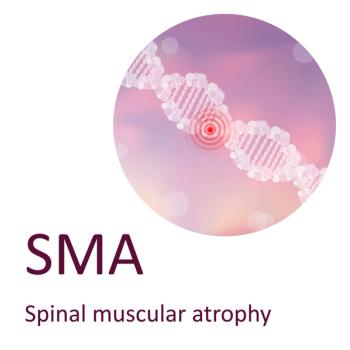
6 Takeaways From a Review of SMA Prognostic Factors and Treatments
Early treatment helps improve the efficacy of treatment of spinal muscular atrophy, according to a comprehensive review article published earlier this month.
But it is not as obscure as it once was, partly because the understanding of the disease has deepened with research advances and insights. Moreover, the FDA has approved three notable treatments for the disease: Spinraza (nusinersen) and Evrysdi (risdiplam), which don’t cure the SMA but do modify the underlying disease process, and Zolgensma (onasemnogene abeparvovec-xioi), which is a one-time gene replacement therapy and, as such, a groundbreaking therapy. The price of those treatments, as well as their novelty, have thrust them — and spinal muscular atrophy — into the limelight. Zolgensma, priced at $2.125 million, is routinely ranked as the most expensive treatment in the world.
The December 2021 issue of Clinical Pharmacology & Therapeutics featured a review of the prognostic factors of SMA and factors that might influence the efficacy of these treatments. Giovanni Baranello of the University College London Great Ormond Street Institute of Child Health and his colleagues included 31 studies in their review, three of which were randomized clinical trials and 28, observational studies. Although there are five clinical types of SMA, type 0 and type 4 are exceeding rare, so Baranello and his colleagues focused on types 1,2 and 3.
The review is extensive and covers many issues but here are four takeaways:
Copies of SMN2 matter. SMA is caused by low levels of survival motor neuron (SMN) protein that are a consequence of mutations to the SMN1 gene. But the SMN2 gene also has a role in SMN protein production. The number of copies of the SMN2 gene varies, and research findings have shown that the more copies that people with SMA have, the longer they survive. The presence of another gene, NAIP, also has had effect on survival but Baranello and his colleagues say in their review that SMN2 is a more powerful predictor of survival. The effect of SMN2 copy numbers on motor function is less clear.
Early onset is associated with shorter survival. In type 1 SMA — which is the most common accounting for about 58% of cases — the onset of symptoms in the first few months of life is associated with poor survival. One study found that the risk of death was reduced by as much as 40% by every month that infants were symptom free.
Severity of disease is associated with shorter survival. Severe symptoms, such as respiratory distress at birth and reduced fetal movements, are associated with reduced survival,
Evidence of Spinraza’s efficacy. The review recaps the results of the ENDEAR trial that showed that infants who were treated with Spinraza were more likely to be alive and not need permanent ventilation than those treated with placebo. However, the reviewers said there was no evidence of a treatment effect in infants who had a disease duration longer than 13.1 weeks. The review says Spinraza improves motor function for infants with types 2 and 3 SMA as well as type 1.
Spinraza efficacy not influenced by SMN2 copies. The review says two observational studies evaluating motor function among infants with type 1 SMA treated with Spinraza had nearly identical outcomes for those with two or fewer SMN2 copies compared with those with three or more. All the infants in the ENDEAR trial had two copies of SMN2, according to the review, so that study doesn’t allow for comparison of patients with different SMN2 copy numbers.
Age of treatment matters. The reviewers say the age and “disease duration” are the most important factors affecting the efficacy of Spinraza. They also say that infants with type 1 SMAtreated with Zolgensma who received a dose at an earlier age demonstrated large gains on a
Newsletter
Get the latest industry news, event updates, and more from Managed healthcare Executive.




















































